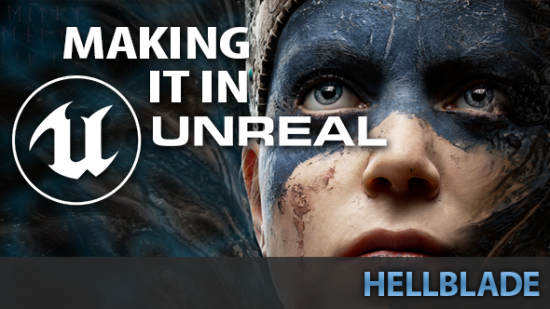In 2014, Ninja Theory came to a crossroads. The critically-acclaimed action game developers had become known for Heavenly Sword, Enslaved, and DmC – games with high production values and pioneering performance capture they were rightly proud of, and wanted to build on. Yet they could also see that triple-A was growing beyond their reach, as costs and team sizes spiralled upward.
Related: the best PC games of 2017 so far.
Their solution was to scale back their team but not their experience or standards, telling the story of a Celtic warrior on a quest to try and save the soul of her love, battling both vikings and psychosis along the way. The result was Hellblade: Senua’s Sacrifice, a miraculous technical feat made by a team just a fraction the size of the ones that typically dominate the triple-A space.
‘Independent triple-A’
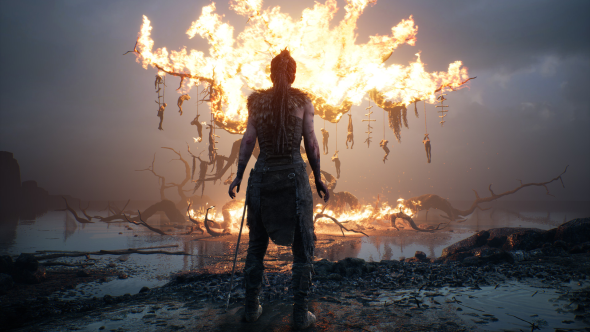
Where DmC was made by around 90 developers, Ninja Theory’s staff averaged just 20 across the three years the studio worked on Hellblade.
“The biggest technical challenge was thinking about how we could deliver the sheer amount of content that we had to, to keep the experience varied and feeling fresh throughout,” commercial director Dominic Matthews tells us.
The team were happy to compromise on length – Hellblade is a seven or eight hour game – but knew that quality was “non-negotiable”. They had to figure out how to deliver on characters, environments, and animation with their reduced roster of veteran developers.
“We always had the attitude of, it’s only impossible when you’ve proved that it’s impossible,” Matthews says. “You can’t sit there and pontificate until you’ve tried to prove it out.”
The development of Hellblade was made possible by numerous clever tricks that allowed Ninja Theory to overcome their lack of manpower. Their principal environment artist, Heavenly Sword vet Dan Attwell, built dense forests by placing just a handful of detailed assets in creative and diverse ways using a ‘kit part’ approach. Meanwhile, the team’s sole character artist used a handheld scanner to capture textures and geometry.
“We couldn’t afford for him to spend his entire time going in and creating characters in minute detail,” Matthews explains. “We used technology to capture some of that data, so we could achieve a high level of realism cheaply and quickly with the resources we had.”
Ninja Theory’s approach has been supported throughout by Unreal Engine 4. The game’s unique, binaural sound, for instance, would have been impossible for just one designer to deliver without the engine’s help
“The point that comes up again and again with UE4 is that it allows creatives to get on with creating,” Matthews says. “We don’t have to have a huge amount of programming support.
Lightning in a boardroom
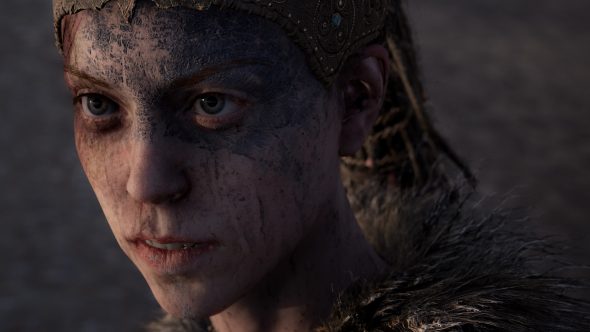
One aspect of their past work Ninja Theory were determined not to lose to budgetary concerns was performance capture. They had pioneered its use in 2006’s Heavenly Sword, which starred Andy Serkis – the actor and director who has since spread the tech’s influence throughout cinema.
“It is how we believe you can deliver a very true and pure character performance in a game,” Matthews says. “By capturing face, body, and voice simultaneously.”
In the past, Ninja Theory would fly out to LA or New Zealand for four or five weeks and spend huge amounts of money shooting scenes for a game in a dedicated motion capture studio. For Hellblade, however, they built a DIY version in their boardroom.
The camera poles, designed for wardrobes, were sourced from IKEA – as were the ceiling lights, which cost about £40 each. Even the cameras came relatively cheap from specialist supplier Vicon, thanks to the prestige Ninja Theory had built up over the preceding decade.
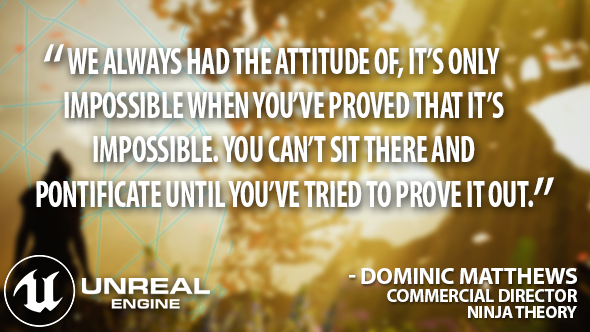
“They wanted to help us find a way of making performance capture more accessible for people,” Matthews explains. “We’ve been able to do it without sacrificing quality. The quality of data we’ve achieved from this set-up is on par with anything we’ve achieved before.”
Every cutscene and most of the character movement was shot in that boardroom. Only a portion of the combat required the team to decamp to a professional studio; the overhead sword swings were poking holes in the ceiling, you see? They spent just two days in Serkis’ Imaginarium, capturing the stunts of Chloe Bruce – double to Daisy Ridley in The Force Awakens – and Cali Nelle – a martial arts and freerunning expert whose work can be seen in Kingsman.
“In those two days, we captured a lot of base data that we could use to build off the entire combat system for the game,” Matthews says.
FMV reborn
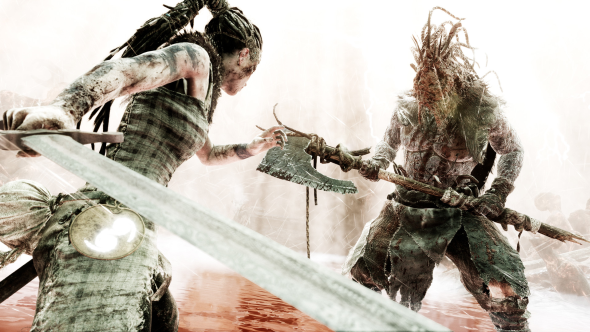
Many of the characters that Hellblade protagonist Senua journeys with manifest as voices. But late on in production, Ninja Theory warmed to the idea of visualising some of them too. Pushing yet more actors through the performance capture process was not an affordable option, however, and so creative director Tameem Antoniades came up with an unorthodox solution: live action. It sounded like FMV madness.
“I’ve worked with Tameem for a long time now,” Matthews says. “And more often than not he proves me wrong, so when these things tend to come up I say, ‘OK, let’s give it a go’.”
Ninja Theory went back to the boardroom, where actors donned costumes and makeup. The team stuck the footage directly in-engine, where effects artist Mark Slater worked his magic.
“He treated it to such an extent that, in the end, it’s actually pretty difficult to tell the difference between Senua and the visions in the game,” Matthews says.
The team tested out the results when Game Informer came to visit for a cover story. Ninja Theory watched closely to see if the journalist would notice the live action when they played through a section of Hellblade – and seemingly, they did not.
“Everyone has seen live action in videogames and how it’s not worked out great previously, so of course when it came up there were raised eyebrows,” Matthews says. “Lo and behold, it turned out fantastic. I think it’s an example of taking that risk and hoping that it pays off.”
Hellblade is available on Steam. Unreal Engine 4 is now free.
In this sponsored series, we’re looking at how game developers are taking advantage of Unreal Engine 4 to create a new generation of PC games. With thanks to Epic Games and Ninja Theory.
